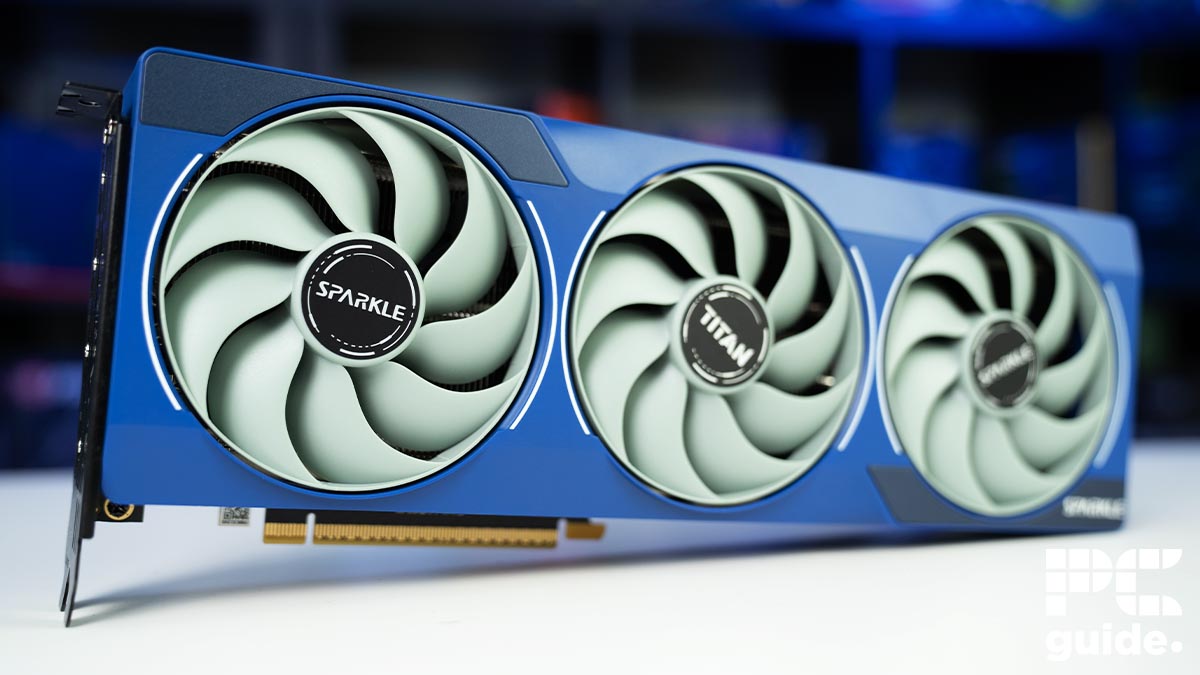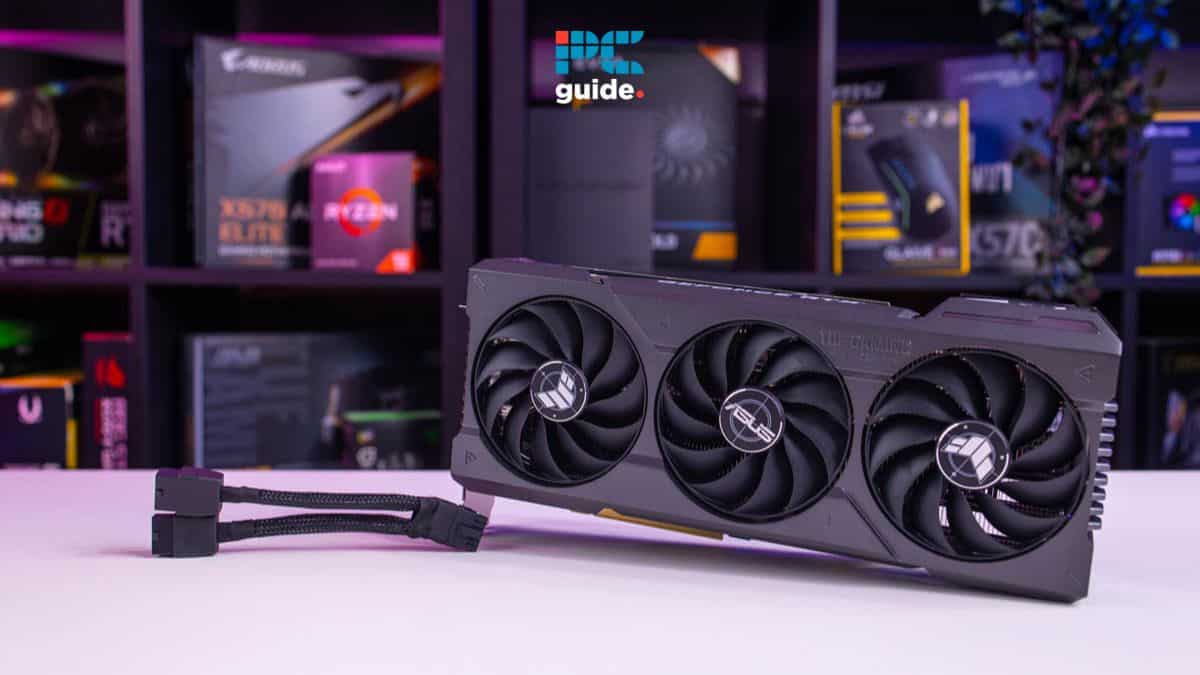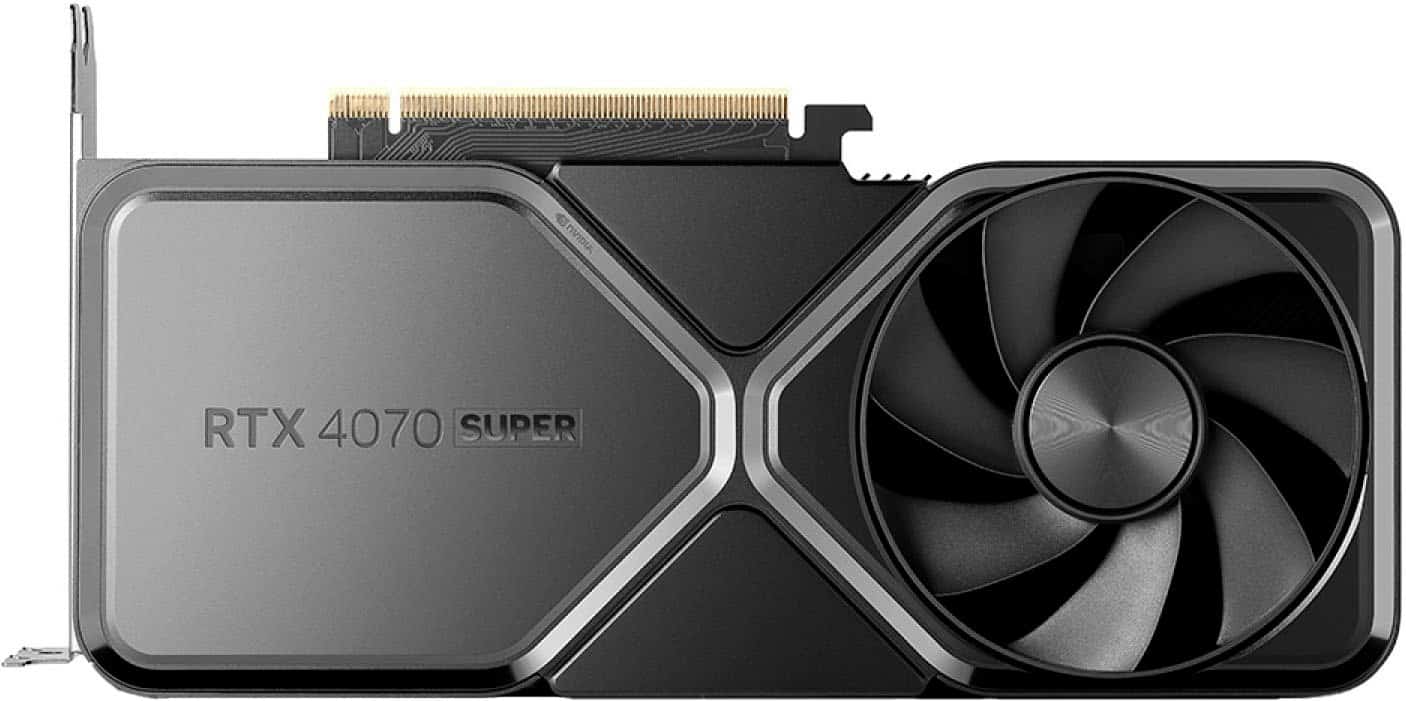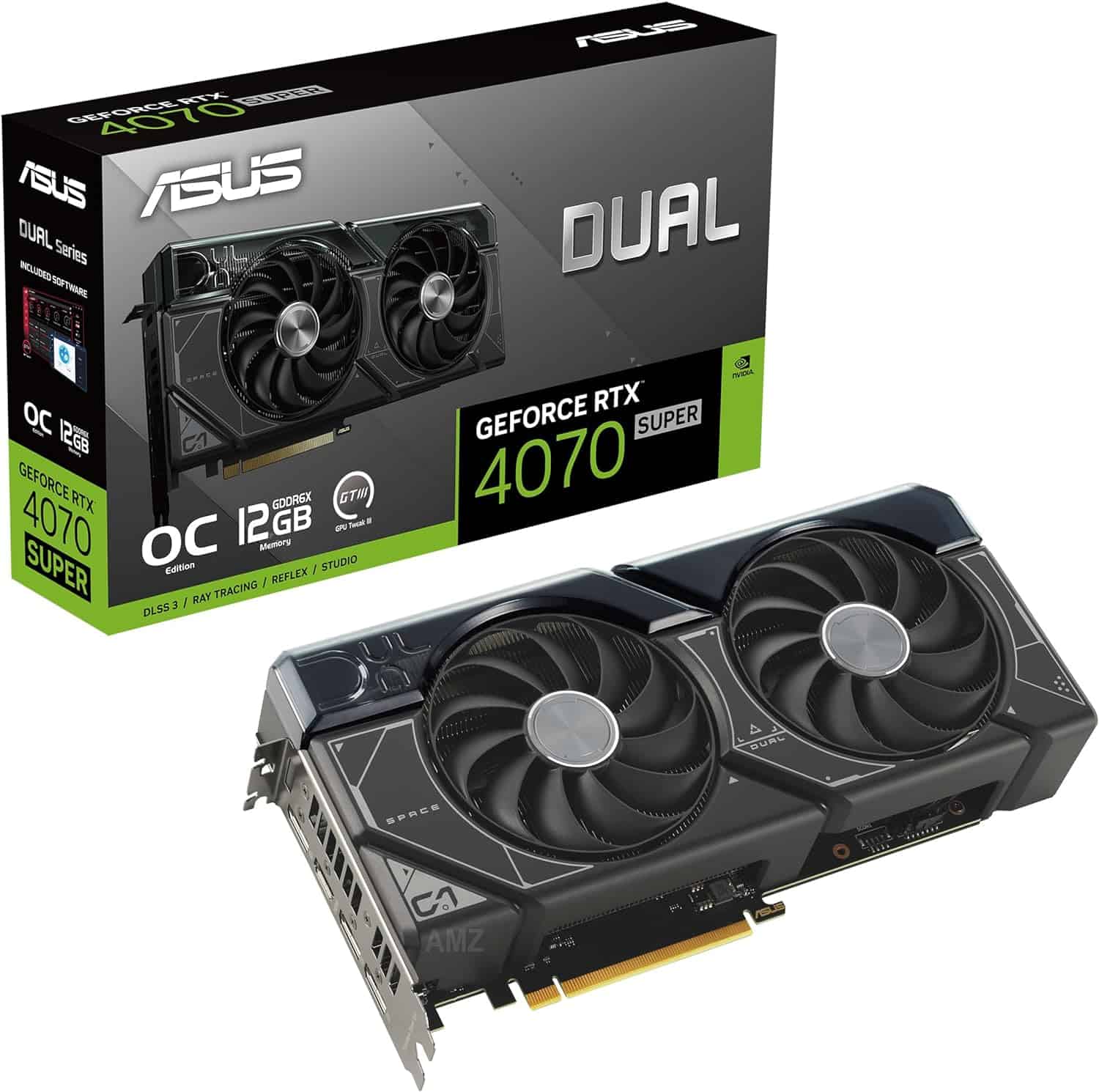Intel Arc B580 vs RTX 4070 Super – which graphics card comes out on top?
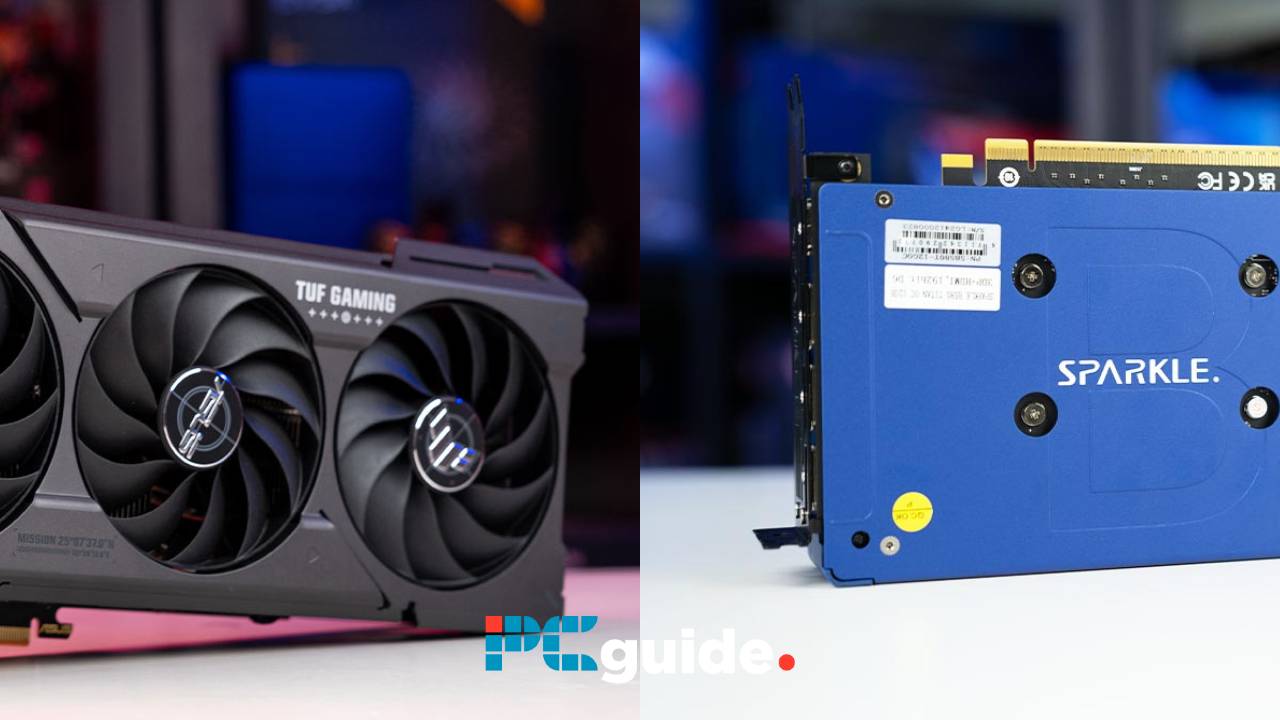
Table of Contents
The Intel Arc B580 has been released and it has excellent performance for a budget card. We’ve thoroughly tested this card in-house for our Arc B580 review and saw that it can even manage 4K gaming in some titles and outperformed the RTX 4060 and the RX 7600 XT. So, the next question is: how would it fare against the mid-range heavy hitters like the RTX 4070 Super?
We’ve reviewed the RTX 4070 Super and can directly compare it with the Intel Arc B580 in terms of gaming and synthetic performance. This should clearly show which card comes out on top, has better value, and suits your requirements. If you’re wondering how we test GPUs, we’ve got you covered. For a more general overview, head over to the PC Guide Testing Lab, and if you find that you want to get your hands on this card and are wondering where to buy it, we’ve got your back too.
Specs comparison
Here's a side-by-side comparison of the key specifications for both graphics cards.
| Specifications | Intel Arc B580 | RTX 4070 Super |
| Cores | 20 | 7,168 |
| Boost clock speed | 2670 MHz | 2475 MHz |
| RT cores | 20 | 82 |
| Memory | 12GB | 12GB |
| Memory type | GDDR6 | GDDR6X |
| Memory interface | 192-bit | 192-bit |
| Bandwidth | 456 GB/s | 504.2 GB/s |
| TBP | 190W | 220W |
| Power connectors | 1x 8-pin | 1x 16-pin |
Memory
Intel has knocked it out of the park in the memory department. Both B570 and B580, despite targeting the budget-end GPU segment, are paired with impressive VRAM specs, with the latter getting 12GB of GDDR6 memory. In comparison, the RTX 4070 Super has the same capacity but takes an edge with its GDDR6X memory type, which equips it with faster transfer rates, allowing it to achieve better bandwidth (504.2 GB/s vs 456 GB/s) despite using the same 192-bit interface.
VRAM plays a huge role in a graphics card’s overall gaming performance. In our review of the 4070 Super, the card ran Assassin’s Creed Mirage and Avatar: Frontiers of Pandora at 4K with 74FPS and 60FPS, respectively. While we didn’t run Avatar: Frontiers of Pandora with the Arc 580, we got 48 FPS in Assassin’s Creed Mirage at 4K.
This is a difference of 26 frames, which is a lot, but the main point is that a vastly cheaper card can deliver playable framerates, and this is without enabling XeSS 2. So, with that turned on, we can expect the B580 to churn out close to or even above 60 FPS at 4K. While the overall raw performance of the RTX 4070 Super is better and is definitely the card to go for if you want to play games at 4K without spending $2000, the value and performance of the B580 puts it in a league of its own in the budget category.
Power consumption
The two graphics cards differ by just 30W in total board power, with NVIDIA’s 4070 Super rated at 220W. This relatively small difference is reflected in the recommended PSU requirements from their respective manufacturers: Intel suggests a 600W PSU for the B580, while NVIDIA recommends a 650W PSU for the 4070 Super. That being said, the Sparkle variant that we tested has a 210W TDP for the 2,800 MHz OC settings, which brings the difference to only 10W.
However, we should not skip the power connectors of the two graphics cards, as this may make you upgrade your PSU. Basically, the B580 uses the traditional 1x 8-pin power connector. However, NVIDIA has transitioned to the newer 1x 16-pin (12VHPWR) connector for most of the RTX 40-series cards, including the 4070 Super.
This means you may need a 2x 8-pin to 1x 16-pin adapter (which comes in the box) or upgrade to a PSU that meets the ATX 3.0 standard. This is not a huge deal, but it is still worth considering, especially if you don’t have much experience building PCs, as the adapter needs to be installed correctly (with a gentle push).
XeSS vs DLSS
A big part of the battlemage launch was Intel’s latest XeSS 2, which is set to compete directly with NVIDIA’s DLSS 3. Of course, the B580 supports XeSS 2, which means it has frame generation, low latency, and super-resolution. Given that the B580 is targeted for 1440p but can run some games at 4K, XeSS 2 should allow it to take its performance to the next level at 4K. In comparison, the RTX 4070 Super can easily handle 4K gaming with DLSS 3 enabled and offer better performance natively due to its more beefed-up hardware.
Another key factor to consider is ray tracing. NVIDIA remains the leader in hardware and DLSS technology, but Intel has stepped up with the B570 and B580. Battlemage GPUs bring improved traversal pipelines, faster intersection calculations, and a larger BVH cache, making ray tracing more efficient and delivering better lighting, shadows, and reflections. In theory, these upgrades should help Intel close the gap with NVIDIA in this area.
With that said, while the B580 will likely deliver good ray tracing performance and upscaling with XeSS 2, I would still recommend Team Green if you’re after these features. That’s because XeSS 2 is still in its early stages, and it is yet to prove itself. Plus, there is also a big gap in the number of games that support DLSS 3 and XeSS 2.
Intel Arc B580 vs RTX 4070 Super – price comparison
Intel has announced the Arc B580 with a $249 price tag, which is less than half of what the RTX 4070 Super costs at the time of writing (at least $599 from Camelcamelcamel). As such, the B580 is certainly a better bang for the buck choice if you’re into 1080p or 1440p casual gaming and don’t really care about all the ray tracing bells and whistles.
Final word
All things considered, the B580 puts up quite a fight against a graphics card that costs two times the amount. It has XeSS 2, ray tracing, better power consumption, and a very similar memory configuration. We can’t really compare the shading units and clock speeds of the two GPUs, as they both have different architectures so the comparison won’t be apples to apples, but things are looking really good for Intel.
As such, if you’re in the market for a new graphics card, I would recommend that you wait just a bit more. Once the B580 is in the market and we have all had a chance to test it out thoroughly, we will know for sure how much performance it offers for the price, and if it is a better bargain or not.
RTX 4070 Super GPUs available now
We’ve also listed all the major retailers you can expect to stock the Intel Arc B850 too.
-
RTX 4070 Super
- GPU: AD104
- 7168 CUDA Cores
- 12 GB GDDR6X
- 220 W TDP
-
ASUS Dual GeForce RTX 4070 Super OC Edition
- GPU: AD104
- CUDA Cores: 7,168
- VRAM: 12GB GDDR6X
- Bandwidth: 504.2 GB/sec
- Bus Width: 192-bit
- Base Clock Speed: 1,980 MHz
-
